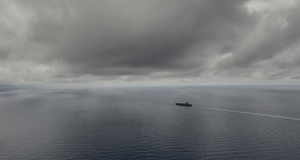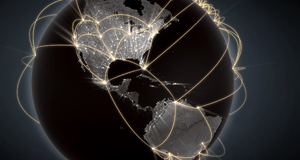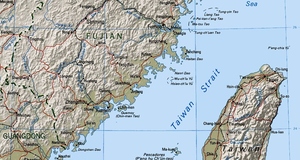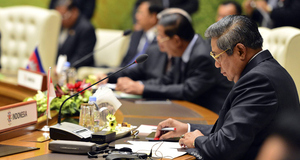Featured Article:Trade and Conflict in South Asia: Examining the Relationship Between Trade Interdependence and Militarized Conflict
By
2012, Vol. 4 No. 08 | pg. 1/5 | »
IN THIS ARTICLE
KEYWORDS
AbstractThe relationship between trade and conflicts between countries in South Asia is important to examine because of the rising prominence of this region of the world. Security issues are of utmost concern when considering the damaging effects that armed conflict has on global economic relations. Therefore, this paper aims to examine whether South Asia has become more stable and less conflict prone as a result of increasing trade relations between countries that have had a history of tense interactions. I rely on primarily quantitative methods to answer this crucial question, through the use of statistical evidence, but I also support my findings with qualitative research that delves deeper into the issue than purely quantitative analyses will allow. My findings suggest that the level of conflicts between two countries adversely affects the level of trade between them. This conclusion is significant because of the implications it has for policy in the region: in order to alleviate tensions in the region and deter future armed conflicts, some sort of a trade agreement in South Asia should be reached that makes engaging in armed conflict too costly for rational state actors to pursue. The Importance of Studying the Trade-Conflict Model in South AsiaTo what extent has economic and trade interdependence heightened or deterred military conflicts in South Asia? In a world with increasingly interdependent economic relations between states, military conflicts on any scale are more influential on the world stage as a whole. However, it is not necessarily evident whether expanded trade relations would help prevent issues from being fought out militarily between nations, or whether they would heighten armed conflict. I hypothesize that trade interdependence in South Asia has led to more stable security in the region, since conflicts would be less likely to be dealt with using military force. Contrarily, some scholars contend that the number of military conflicts have actually increased in the world in recent years. This opposing argument could be supported by the idea that more interactions between two states could result in more chances for tensions to arise. Moreover, it could also be claimed that economic relations are less important to states than political motivators when deciding whether or not to go to war. The relationship between trade and conflicts between countries in South Asia is important to examine because of the rising prominence of this region of the world. Security issues are of utmost concern when considering the damaging effects that armed conflict has on global economic relations. Therefore, it would be useful to examine whether South Asia has become more stable and less conflict prone as a result of increasing trade relations between countries that have had a history of tense interactions, such as India and Pakistan or India and China. The opposing viewpoints on this economic relations- security relationship seem to align with the liberalism-realism dichotomy in international relations theory. Liberals would argue economic interdependence lowers the prospect of armed conflict because the value of trading would outweigh any benefits that could result from aggression.On the other hand, realists contend high interdependence would actually increase the likelihood of war. In an anarchic international realm, as realists see the world to be, states continually fear for their security. As a result, interdependence between two states could make them seem vulnerable and it gives states an incentive to go to war, since they need to ensure they have ongoing access to materials and goods they need. Though both sides have their merits and their fair share of scholars who support liberalist and realist doctrine, I believe the argument for liberalism when dealing with international economic relations and security is more applicable. In South Asia, a region which has seen years of constant tensions between the major players of India and Pakistan, India and China, and India and Bangladesh, among others, it appears as though the proclivity for armed conflict has actually decreased in the past decade or so, even as trade relations between the pairs of nations have increased. It would definitely be important to examine the interactions between South Asian countries to see what has led to this shift toward more peaceful relations between the formerly constantly feuding neighbors. The Trade-Conflict Model: Two Perspectives and Implications for South AsiaScholars have long argued over the applicability of certain international relations theories to the trade-conflict relationship. The two dominant perspectives in international relations- realism and liberalism- each claim that they can explain whether increased trade and economic interdependence amplifies or reduces military conflicts in the world (Copeland 1996). While realists argue that increased interactions lead to a heightened security dilemma, uncertainty, and more conflict, liberals assert that surges in interdependence reduces armed conflicts between state actors. Thus, the existing literature on the trade-conflict model is centered on the dialogue between proponents of the realist emphasis on security dilemmas and anarchy and the advocates of the liberal “democratic peace” theory (Barbieri and Schneider 1999). However, there exists limited research that has delved into an analysis of the extent to which increased economic interdependence in South Asia, an area of increasing critical interest and importance, has heightened or deterred conflict in the region. My study aims to encompass this focus on South Asia that has not been investigated by other scholars in the discipline and its results will support whether the realist or liberalist perspective of the relationship between trade and military conflict is more applicable to the South Asian region of the world. Realists argue that their perspective of the trade-conflict model is the most applicable and supported of all the international relations theories, as increased economic interdependence leads to heightened uncertainty in an anarchic world, which then results in more military conflicts. One factor that realists claim explains why states that have increased levels of economic exchange will actually engage in more armed conflicts is that the states fear they will profit unequally from the relationship with their trade partners (Barbieri and Schneider 1999). One of the most prominent advocates of this realist theory is Kenneth Waltz, who wrote that “close interdependence nears closeness of contact and raises the prospects of occasional conflict” (Waltz 1979, 138). Furthermore, various scholars over the years have found that countries that are more open to interstate trade have a higher probability of war. This argument is founded on the premise that “multilateral trade openness decreases [both] bilateral dependence to any given country and the cost of a bilateral conflict” (Martin et al. 2008, 865), so for nations in close geographic proximity to each other, trade has had a significant effect on their probability to engage in military conflict. Perhaps the most well-known study that shows that extreme economic interdependence actually has the greatest potential for heightening the probability of conflict is one conducted by Barbieri (1996). Even though studies of this nature appear to be justified in their conclusions, there are some fundamental flaws that should be addressed. Primarily, even though multilateral trade allows state actors to receive goods from numerous other nations, it does not necessitate a reduction of bilateral dependence to a given country. If two nations engage in bilateral trade of weapons, for example, then even if one of those countries trades other goods with multiple actors, it would not reduce that nation’s dependence on its original partner for arms. Moreover, the costs of a bilateral conflict would still be significant enough to influence a state’s actions toward another, which would most likely involve trying to avoid military engagements. Finally, while Barbieri (1996) does find evidence that supports her claim that increased trade interdependence heightens militarized interstate disputes, or MIDs, she actually changed the theoretical requirement and measurement of her study. After accounting for this alteration and controlling for temporal dependence, considerably strong support is found for the liberalist belief that economic interdependence has an influence on the reduction of conflicts (Oneal and Russett 1999). Therefore, even though the realist perspective does have its merits, it is the less likely option between realism and liberalism to be applicable to the study of the trade-conflict model in South Asia. On the other hand, scholars who believe in the liberalist approach to the trade-conflict relationship often cite the works of Kant and Montesquieu, focused on the liberalizing effects of trade and cost-benefit analysis (Barbieri and Schneider 1999), to argue their point that economic interdependence lowers the prospect of armed conflict. Liberalists argue this correlation exists because the value of trading would outweigh any benefits that could result from aggression. According to liberal theorists, “commerce promotes peace because violence has substantial costs” (Hegre, et al. 2010, 763) that nations do not want to pay. Trade provides benefits and profits for both sides that would be lost if the states went to war. Liberalists may then ask this fundamental question: if trade is beneficial to both sides, why would state actors ever go to war? They would be harming themselves if they did since “states are deterred from initiating conflict against a trading partner for fear of losing the welfare gains associated with the trading relationship” (Polachek 1980).While this reasoning is logical, it does not explain why some studies have found that increased trade actually results in more MIDs. This apparent discrepancy between what the liberalist perspective on the trade-conflict model predicts will happen and what data from the world actually shows appears to be a flaw in the liberalism argument. However, other scholars have shown that the “interdependent states would rather trade than invade” (Copeland 1996) concept may still be substantiated with further research into this topic.Continued on Next Page » Suggested Reading from Inquiries Journal
Inquiries Journal provides undergraduate and graduate students around the world a platform for the wide dissemination of academic work over a range of core disciplines. Representing the work of students from hundreds of institutions around the globe, Inquiries Journal's large database of academic articles is completely free. Learn more | Blog | Submit Latest in International Affairs |


















